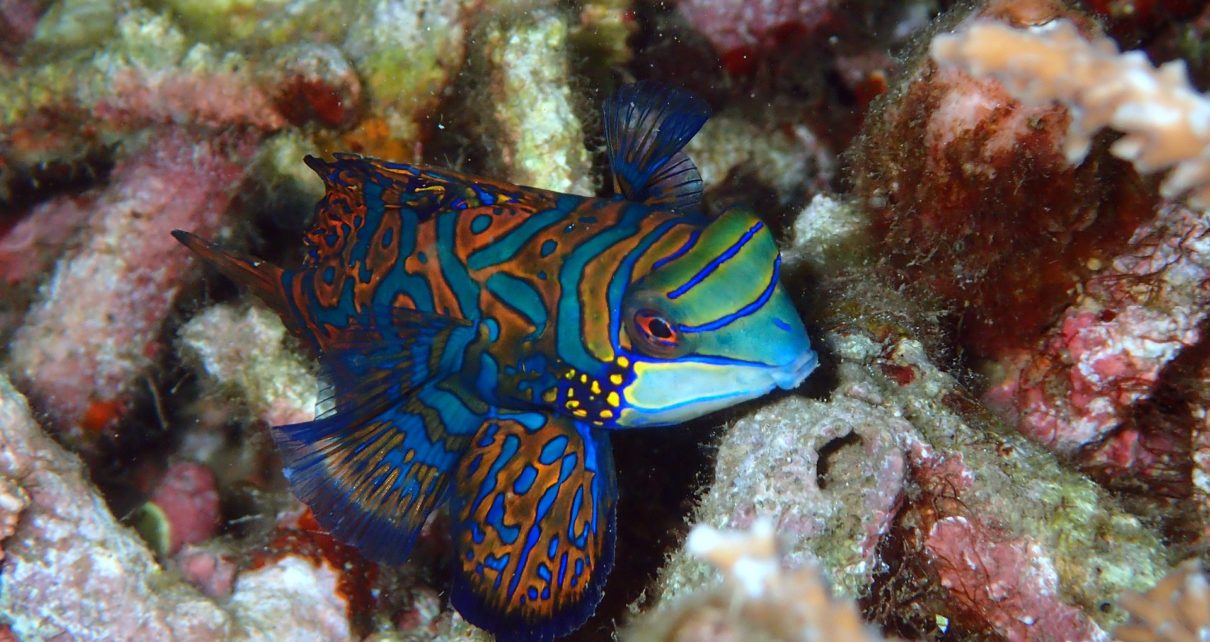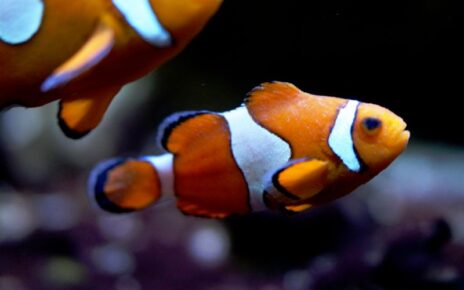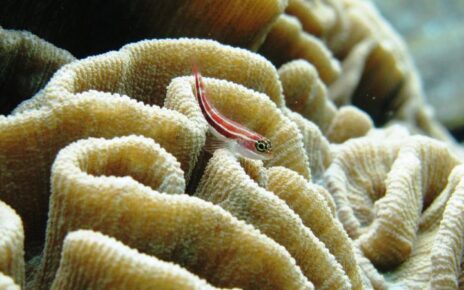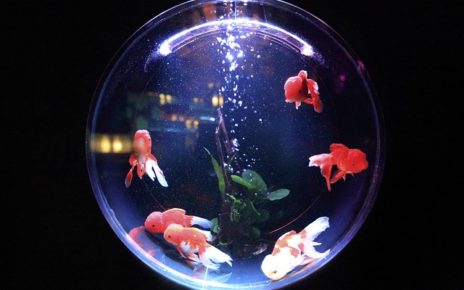Feeding a Mandarin Goby is not as straightforward and simple as it is for other fish. A Mandarin fish will need a constant supply of live Copepods, and other prepared foods in order to stay healthy and well fed. If you plan on getting a Mandarin Goby you will need to have a well-established aquarium, with a healthy population of live Copepods (Buy Online) already present in the tank.
Mandarin Fish Diet
Wild caught Mandarin Fish will need to exclusively feed on live Copepods and Brine Shrimp. Captive born Mandarins, on the other hand, can eat small amounts of frozen, or prepared foods, but they will still need to consume Copepods as their primary source of nourishment.
Live Copepods

Copepods make up the majority of a Mandarins diet, both in the wild and when they are kept in captivity in a fish tank. Copepods are small crustaceans that feed on phytoplankton and other microorganisms that reside at the bottom of the food chain. Out of all the Copepod species, the most common and nutritious are the Tisbe, Tigiropus and the Apocyclops.
Mandarin fish will spend most of their day hunting down these small crustaceans in order to meet their daily caloric and nutritional needs. Before adding a Mandarin Fish to an aquarium you will need to make sure you have a large population of Copepods in order to ensure your Mandarin will have enough food to eat.
If you don’t already have Copepods in your tank, you will need to buy live Copepods and allow their population to grow before adding a Mandarin Goby to a saltwater tank. Luckily there are a number of live Copepod kits that you can buy online in order to seed your aquarium. These kits come with everything you will need to start and maintain a healthy Copepod population for a Mandarin fish.
Live Brine Shrimp

Freshly hatched brine shrimp are a good supplemental live food for a Mandarin Goby. Small nano Brine Shrimp tend to be the best option since they are more nutritious, and they are easier for a Mandarin to eat. Older brine shrimp, on the other hand, should be fortified with phytoplankton in order to make sure your Mandarin is getting enough vital nutrients.
Brine shrimp can help round out a Mandarins diet if the Copepod population in your tank is getting a little thin. They also swim around more vigorously, so they can be a good source of stimulation for a bored mandarin.
For the most part, though, Brine shrimp should only make up a small part of your Mandarins diet since they are not that nutritionally dense. Although, they can serve as a good source of calories if your mandarin is looking a little thin. Copepods should still make up the majority of a Mandarins diet since they contain all the nutrients a Mandarin needs to stay healthy and fit.
Frozen / Freeze Dried Food

If you have a captive-raised Mandarin fish you might be able to get them to eat freeze-dried food. Frozen or freeze dried foods should not make up the majority of their diet, but they can be offered up as a tasty treat. Some good choices are frozen brine shrimp and freeze dried Mysis shrimp. These shrimp are usually small enough to fit in a Mandarins mouth, which makes them easier to eat. They are also close enough in taste and texture to their normal diet, so you will have a better chance of getting a Mandarin to try it.
Pellet Food

Captive bred Mandarins might also eat pellet food if you happen to get a very inquisitive fish. Make sure to get a high-quality sinking pellet since Mandarins very rarely feed from the surface of the water. Once the pellet lands on the bottom of the tank a Mandarin might give it a nibble and spit it back out. If they start doing this then it is a good sign that they might eventually eat it once they soften it up a bit.
If you do get your Mandarin to eat pellets they should still only be used as a supplement to your Mandarins regular diet. Mandarins will still need to eat mostly live and frozen foods in addition to any of the pellets they might eat. Although, you should still count yourself as lucky if you do manage to get your mandarin to eat pellets since they can be a real picky fish.
What do Mandarin Fish Eat
| Image | Name | Rating | Shop |
|---|---|---|---|
 | AlgaeBarn Pods & Phyto Combo | ||
 | AlgaeBarn Tisbee Pods | ||
 | Brine Shrimp Eggs | ||
 | New Life Spectrum Marine Sinking Pellet Food |
Mandarin Goby Food
AlgaeBarn 5280 Pods
AlgaeBarn 5280 Pods (Buy Online) are some of the best Copepods for mandarins on the market. This mix contains three species of Copepods that will satisfy the most finicky fish. Inside the jar, you will find Tisbe, Tigiropus and the Apocyclops Copepods which are the primary species that make up the majority of a Mandarins diet.
AlgaeBarn Tisbe Pods
This large bag of AlgaeBarn Tisbe Pods (Buy Online) is the perfect way to add a large number of Copepods to your tank. Since Tisbe pods are the Mandarins favorite food you will want to make sure you have an ample population in your aquarium. This large pouch contains at least 12,000 live Tisbe Copepods which will definitely help kick-start your Copepod population real quick.
5 Bottle Live Food Package
This 5 Bottle Live Food Package (Buy Online) is the perfect way to create a self-sustaining food source for your Mandarin fish. This kit contains Tisbe pods, Tiber Pods, Rotifers, green phytoplankton, and gold phytoplankton.
The phytoplankton and rotifers act as the primary food source for the Copepods, which in turn will feed your Mandarin fish. By supplying the Copepods with a food source they will reproduce faster and be more nutritious for your fish. That means you won’t have to replenish your Copepod population as often, and you can rest assured your Mandarin Goby will always have enough to eat.
AlgaeBarn Pods & Phyto Combo
AlgaeBarn Pods & Phyto Combo (Buy Online) is a nice easy to use combo kit to get your Copepod population off to a good start. This kit comes with a mix of Tisbe and Tiger pods, along with ocean Magik phytoplankton.
This combo pack will help you establish a strong colony of Copepods in a small to medium sized tank. There are also 64 oz an 128 oz size options available if you have a larger tank. In addition, like all AlgaeBarn products, this one comes with a live arrival guarantee.
Reef Phytoplankton
Seachem Reef Phytoplankton (Buy Online) is an excellent food source for the Copepods in your marine tank. This product contains a mix of both green and brown phytoplankton, which act as a nutrient source for Copepods, and other filter feeding marine species. By periodically adding phytoplankton to your tank you will be able to keep your Copepod populations healthy, and it will also increase their nutritional quality as well.
Koller Products TOM Aquarium Hatch N’ Feeder Brine Shrimp Hatchery
The Koller Products TOM Aquarium Hatch N’ Feeder Brine Shrimp Hatchery (Buy Online) is a great way to hatch some brine shrimp for your Mandarin fish. This hatchery is designed to automatically hatch and dispense nutritious brine shrimp right into your aquarium. It can work in both fresh and saltwater tanks, and it comes with all the airline tubing, and cleaning equipment you need to run it all included with this kit.
Brine Shrimp Eggs
If you plan on feeding your Mandarin fish brine shrimp, you will need to get some Brine Shrimp Eggs (Buy online). This resealable package of high-quality brine shrimp eggs has a 90% hatch rate. You can also get it in multiple size options from 25 grams all the way up to 100 grams.
New Life Spectrum Marine Fish Formula 1mm Sinking Pellet
New Life Spectrum Sinking Pellet Food (Buy Online) is a great pellet food for a Mandarin fish. These pellets are relatively small, so they should be easy for a Mandarin to eat. They are also a sinking pellet, which makes them the perfect pellet food for a bottom feeder like a Mandarin fish.







